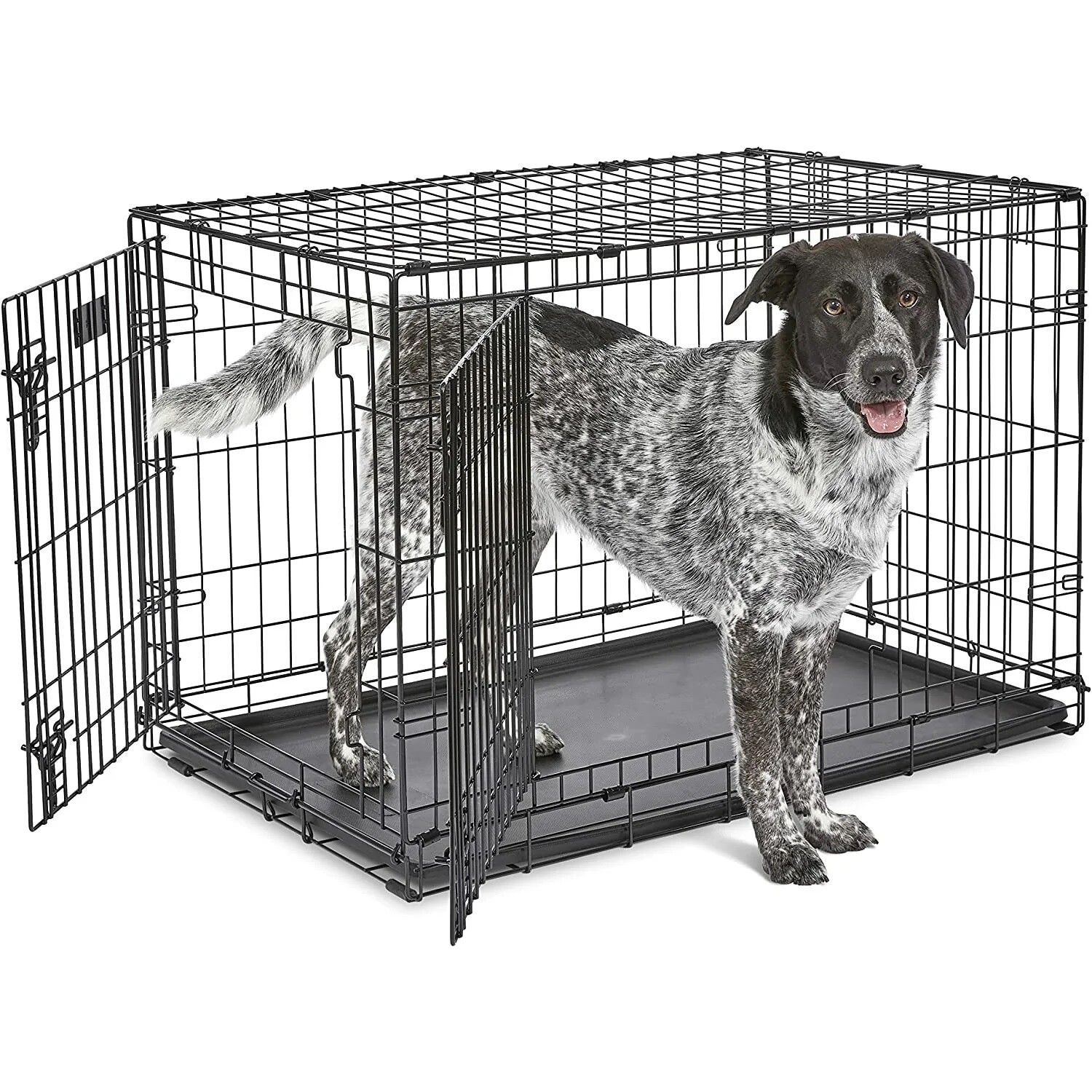*STORE HOURS*
OPEN Tues-Fri 10-6 & Sat 10-4
CLOSED Sun-Mon and ALL Statutory Holidays
Your one-stop-shop for pet food, treats, toys, and accessories on the Bruce Peninsula.
Serving Tobermory, Lion’s Head & Wiarton.
WE SHIP CANADA WIDE!! (We DO NOT ship outside of Canada)
To stay up to date on sales & promotions like us on Facebook and follow our Instagram page.
Bud'Z Deluxe Wire Dog Crate Double Door
- Come with a divider panel which cuts housebreaking time in half by keeping your puppy from eliminating in one end and sleeping in the other.
- Allows you to adjust the length of the living area as your puppy grows into its adult size home.
- Easily sets up & folds down to portable size.
- Durable, satin black electro-coat finish.Easy to clean, ABS Plastic Pan.
- Corners are rounded for ultimate safety.
- Side door allows flexibility so the crate can be placed in the most convenient location, as well as providing a benefit for convenient travel.
Tips on crate training puppies and dogs
Crate training uses a dog’s natural instincts as a den animal. A wild dog’s den is its home, a place to sleep, hide from danger, and raise a family. The crate becomes your dog’s den, an ideal spot to snooze or take refuge during a thunderstorm.
Step 1: Introduce your dog to the crate
Place the double door crate in a common area of your house, such as the family room or kitchen. Bring your dog to the crate and encourage him/her to enter by dropping a small amount of food nearby, then just inside the crate door, and then all the way inside the crate. Never force your dog to go inside the double door crate, and do not lock them in the crate.
Step 2: Feed your dog meals in the double door crate
After your dog has been introduced to the crate and feels comfortable in it, begin to feed him/her their regular meals inside the crate. This creates a pleasant association for your dog to the crate. At first, let your dog out immediately after he/she is done eating. With each successive meal, increase the time your dog is inside the crate after eating. This will help teach him/her that the crate is a safe, enjoyable environment. If your dog whines to be let out of the crate, don’t let him/her out until they stop. Otherwise, they will learn that whining is the way to get out of the crate, and will continue to keep whining.
Step 3: Lengthen periods
After your dog is comfortable eating meals inside the crate and shows no sign of fear or anxiety, start to confine him/her to the crate for short periods of time while you’re home. Give your dog a treat upon entering the crate, then shut the door. Stay close to the crate, gradually moving out of the dog’s sight for longer periods of time, until your dog can stay in the crate for 30 minutes without whining. After this, your dog should be ready to stay in the crate for short periods of time while you are gone.
Step 4: Crate your dog when you leave/Crate your dog at night
Don’t prolong your departure. Calmly place your dog in the double door crate, reward with a treat, then leave. If you wish to crate your dog at night, the crate should be placed close by, especially for puppies, as they might wake multiple times during the night for a potty break. Older dogs should also be crated close by, so they don’t associate the crate with isolation. Once your dog is comfortable sleeping through the night in the crate, you can move the crate farther away from you, if you want. Never pound on your dog’s crate or use the dog’s crate as punishment for bad behavior. This can lead to anxiety for your dog. Always aim to make crating a positive experience.

